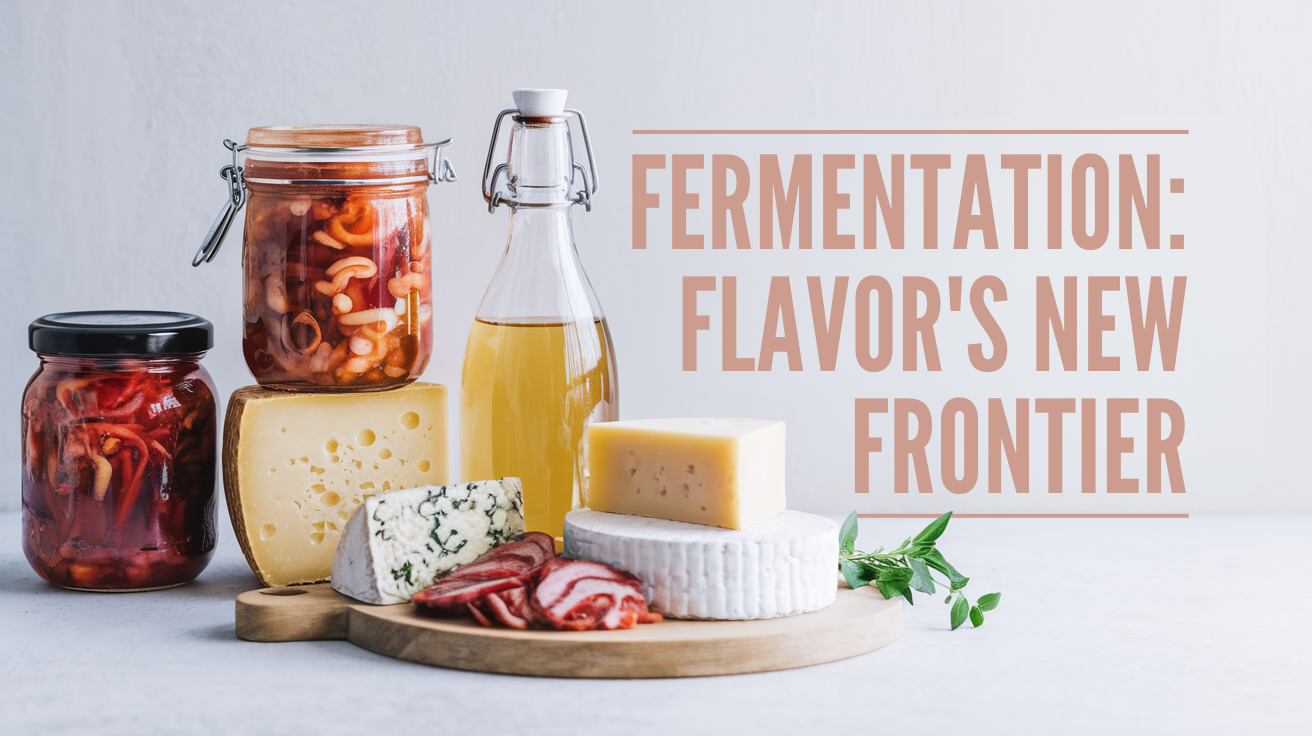Understanding Fermentation and Its Flavor Impact
Fermentation has a long history as a food preservation method, but today, it plays a crucial role in shaping bold, innovative flavors. At its core, fermentation is a metabolic process where microorganisms like bacteria, yeast, or fungi convert sugars into acids, gases, or alcohol, creating complex taste profiles that range from tangy to earthy. This transformation adds depth to dishes, making fermented flavors a favorite among chefs and food developers.
Cultural Influences on Fermentation
Fermentation has roots in many global culinary traditions. Cultures worldwide have long relied on fermentation for food preservation, and the results have often been nothing short of delicious.
- Asia: From Korean kimchi to Japanese miso, fermented foods have been staples in East Asian cuisine for centuries. Kimchi, for example, preserves vegetables and introduces a signature spicy, sour, and umami flavor that elevates any dish.
- Europe: In Europe, fermented foods like sauerkraut, yogurt, and various cheeses have also played crucial roles. Fermented dairy products, in particular, are rich in probiotics and are gaining more and more interest from modern consumers interested in gut health.
- Africa and the Middle East: Fermented products like injera (Ethiopian flatbread) and laban (fermented dairy drink) also offer unique flavor profiles influenced by regional ingredients and fermentation processes.
Today, chefs and food developers are blending these traditional fermented foods with modern techniques, pushing the boundaries of flavor.
Market Trends and Consumer Demand for Fermented Products
The market for fermented foods keeps growing, driven by consumer interest in both flavor and health. The global fermented foods and beverages market is expected to grow at a CAGR of around 6% until 2027. Health-conscious consumers, in particular, are drawn to the probiotic properties of fermented foods, which are linked to gut health, improved digestion, and immune support.
Millennials and Gen Z are particularly fond of this trend, with a preference for bold, adventurous flavors and food products that offer functional health benefits. The intersection of flavor and wellness makes fermented foods an appealing category, especially for brands looking to create new product ranges to meet this demand.
Flavor Development: How to Use Fermentation in Modern Cuisine
For a flavor house like Aromatech, fermentation offers an exciting avenue for innovation. Creating fermented flavors involves understanding the delicate balance of flavor compounds that develop during the fermentation process. By manipulating these compounds, we can create flavors that are tangy, earthy, and complex, mimicking the characteristics of natural fermentation or enhancing existing products.
When developing fermented flavors, there are several approaches:
- Natural Fermentation: Using traditional fermentation techniques to create bespoke flavor profiles for products.
- Mimicking Fermentation: Incorporating lab-developed compounds that replicate the nuanced flavors of naturally fermented foods. This is particularly useful when aiming for consistency in mass-produced products.
- Blending Fermented Flavors: Combining different types of fermented flavors, such as adding miso notes to a savory snack or incorporating kombucha’s tanginess into a beverage.
The Future of Fermented Flavors in Food Innovation
Looking forward, fermentation is set to play an even more significant role in shaping food trends. As consumers continue to look for functional foods with health benefits, the fusion of fermented ingredients in everyday products—ranging from snacks to beverages—will become more prevalent.
Moreover, as chefs and food developers experiment with new ways of fermenting unconventional ingredients, we can expect to see an expansion in the types of foods that are fermented. Innovations in fermentation technology, such as controlled environments and new fermentation agents, will also pave the way for more consistent and scalable fermented flavor production.
One area ripe for exploration is the integration of fermented flavors into plant-based foods. The growing demand for plant-based diets presents a unique opportunity to use fermentation to enhance the umami or savory characteristics often lacking in meat alternatives. By incorporating fermented elements, flavor developers can create more satisfying and flavorful plant-based products.
The rise of fermented flavors represents not only a resurgence of ancient culinary practices but also an opportunity for flavor houses to innovate and develop products that meet modern tastes. As the demand for more complex, health-focused, and globally inspired flavors continues to grow, fermentation will undoubtedly remain at the forefront of food and flavor innovation.
For companies looking to stay ahead in this trend, exploring fermented flavors is not just a culinary curiosity—it’s a strategic move. The dynamic and complex nature of fermented flavors opens up endless possibilities for creating new products that resonate with consumers seeking bold and exciting taste experiences.
Contact us at americas@aromatechus.com to learn more about our flavoring solutions.



